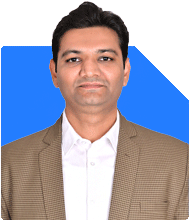PPF Maturity: Should I Stay Invested or Invest in Equity for Daughter's College Fees in 6 Years?
Ramalingam Kalirajan |10870 Answers |Ask -Follow
Mutual Funds, Financial Planning Expert - Answered on Oct 16, 2024
He has an MBA in finance from the University of Madras and is a certified financial planner.
He is the director and chief financial planner at Holistic Investment, a Chennai-based firm that offers financial planning and wealth management advice.... more

Hello Sir, Our both PPF accounts are going to mature next year.One account has around 22L corpus and another has around 11L.Our next major goal is college fee for daughter which is around 6 years later. When we assess our portfolio we have around 1.3cr in equity, 2.5cr in real estate,20L in gold,75L in debt funds ( including PPF, SSY and NPS).We don't have any immediate need for this money. We may need this money after 6 years or may not. As India is a growing economy and equity is giving good returns and interest rate of PPF are either remaining same or might decrease too.So should we continue these accounts with yearly contributions or should we withdraw it and invest in equity?
You and your family have done an excellent job managing your finances. With Rs 1.3 crores in equity, Rs 2.5 crores in real estate, Rs 20 lakhs in gold, and Rs 75 lakhs in debt funds, your portfolio reflects a balanced approach to wealth creation and asset protection.
Your PPF accounts are maturing next year, holding a total corpus of Rs 33 lakhs between them. This presents an interesting opportunity to reconsider your options, especially since your next significant financial goal—your daughter’s college education—is still six years away.
It is also wise to recognize that India is a growing economy, and equity markets have the potential to deliver higher returns over the long term. However, this comes with volatility, while PPF provides safety but at lower returns. Let’s take a deeper look at whether you should continue contributing to your PPF accounts or reallocate some of that corpus into equity-based investments.
Understanding the Role of PPF in Your Portfolio
The Public Provident Fund (PPF) has long been a preferred investment vehicle for many Indian investors, including yourself, due to its risk-free nature and the fact that it offers tax-free returns. With a lock-in period of 15 years and the possibility of extending the term in blocks of five years, it is an ideal tool for long-term savings. As of now, the PPF interest rate stands around 7-8%, but there are concerns that it could remain stagnant or possibly decrease in the future.
Your total PPF corpus of Rs 33 lakhs (Rs 22 lakhs in one account and Rs 11 lakhs in another) reflects the stability and disciplined approach you’ve had toward growing your wealth through safe investments. The tax benefits associated with PPF also make it an attractive option for many. However, as you near the maturity of these accounts, it is prudent to evaluate whether this vehicle continues to serve your long-term financial objectives as effectively as before.
Given that you don't have any immediate liquidity needs, this is the perfect time to review whether PPF remains your best option, particularly when considering alternative investment avenues such as equity mutual funds.
Considering Equity for Long-Term Growth
Equity investments have a proven track record of generating substantial returns over the long term. Your existing Rs 1.3 crore equity portfolio indicates that you are already familiar with the benefits of equity. The stock market can generate wealth, particularly in growing economies like India. Over a 5-10 year period, equity markets tend to deliver higher returns compared to traditional savings vehicles such as PPF, provided you can stomach the associated market volatility.
One of the key considerations in your case is that your daughter's education is approximately six years away, a reasonably long-term goal. Equity investments generally do well over time, but there can be short-term market corrections or volatility, which you must be prepared for. Equity may help grow your wealth significantly, but the risk is always that market conditions could turn unfavorable at the time when you need to liquidate your investments. Hence, any decision to increase your equity exposure should be balanced against your overall risk tolerance.
While equity has its risks, it’s an option worth considering for long-term goals like your daughter’s education, especially since you already have a strong portfolio and other stable assets. You should aim for a well-balanced portfolio that delivers growth without exposing you to excessive risk.
The Risk-Return Balance
Your current portfolio shows that you have taken a relatively diversified approach by holding significant portions in real estate (Rs 2.5 crores), equity (Rs 1.3 crores), gold (Rs 20 lakhs), and debt funds including PPF (Rs 75 lakhs). While real estate and gold offer some level of safety and appreciation potential, they are often less liquid than other forms of investments and can be challenging to sell quickly. Gold has traditionally been a hedge against inflation but may not offer the kind of returns that equity can deliver.
A key question you need to ask is how much more risk you are willing to take at this stage, given that you have a significant portion of your investments in relatively stable asset classes. Since equity markets are volatile but promise higher returns, this could be an excellent time to consider shifting a portion of your maturing PPF corpus into equity, provided you’re comfortable with the risk.
One strategy to reduce the risk of equity market fluctuations is to invest systematically, either through Systematic Transfer Plans (STPs) or Systematic Investment Plans (SIPs) in mutual funds. This way, you can gradually shift your funds from PPF into equity mutual funds, allowing you to benefit from rupee-cost averaging and reduce the impact of market volatility.
Should You Continue Contributing to PPF?
Given that the PPF offers a guaranteed, risk-free return and tax-free income, there’s a strong argument for continuing your yearly contributions. The principal is secure, and even though the interest rates may decrease, the returns are still risk-free. This can act as a safety net for your daughter’s education.
However, there’s also the case for reallocating part of this corpus into equity, especially considering the growing Indian economy and potential higher returns from the stock market. If you reduce your annual contributions to PPF, you can allocate more towards higher-return investment avenues such as equity mutual funds. The decision ultimately boils down to your risk tolerance and future income needs.
If you decide to reduce your PPF contributions, ensure you have enough funds in secure, low-risk options to meet your liquidity needs without having to sell equity at a bad time in the market.
Why Equity Mutual Funds Are a Better Option than Index Funds
While both equity mutual funds and index funds invest in equities, actively managed equity mutual funds offer several advantages over passive index funds. Actively managed funds are managed by fund managers who actively adjust the fund’s portfolio to take advantage of market opportunities and manage risks.
Here’s why actively managed funds might be a better option for you:
Higher Potential Returns: Actively managed funds can outperform index funds by identifying investment opportunities in growing sectors. Fund managers constantly monitor the market, which can lead to higher returns than passively following an index.
Risk Management: Professional fund managers actively manage risk by adjusting the portfolio based on market conditions. This can provide better downside protection during volatile times, making it a safer choice for conservative investors who still want exposure to equity markets.
Customization: Actively managed funds can be tailored to your financial goals and risk profile. If you need a fund focused on a particular sector or with a balanced risk approach, your Certified Financial Planner can recommend suitable funds.
On the other hand, index funds simply track the performance of an index, which can be limiting during volatile market conditions. They offer no protection against downturns and might underperform in certain market conditions. Additionally, the returns of index funds are often lower than those of actively managed funds.
Why Investing Through a Mutual Fund Distributor is Preferable to Direct Funds
You might have heard about direct funds, which allow investors to bypass intermediaries and invest directly with the mutual fund house. While direct funds come with lower expense ratios, they also come with certain disadvantages, especially if you’re not an experienced investor or don’t have the time to manage your investments.
Here’s why investing through a Mutual Fund Distributor (MFD) who holds a Certified Financial Planner (CFP) credential is a better option:
Expert Advice: An MFD with CFP certification can offer you personalized advice and help you choose the right funds for your financial goals. They can monitor your portfolio and suggest timely changes based on market conditions and your changing life goals.
Convenience: Managing mutual funds requires time, research, and effort. A financial professional can handle these tasks for you, ensuring that your portfolio stays aligned with your objectives.
Better Risk Management: A CFP-certified MFD can advise you on how to balance risk and return, ensuring that your portfolio isn’t too aggressive or too conservative. This kind of personalized service is invaluable when planning for long-term goals like your daughter’s education.
Taxation Considerations
When deciding whether to continue with PPF or move funds into equity, it’s essential to factor in the tax implications.
PPF: As mentioned earlier, the returns on PPF are entirely tax-free. This is a significant benefit that you’ll lose if you move funds into taxable instruments like equity mutual funds.
Equity Mutual Funds: Long-term capital gains (LTCG) from equity mutual funds are taxed at 12.5% on gains above Rs 1.25 lakhs annually. This is relatively low compared to other forms of taxable income, but you should still factor it into your decision-making process.
Debt Funds: If you’re considering debt funds as a lower-risk alternative to PPF, keep in mind that short-term capital gains (STCG) from debt funds are taxed as per your income tax slab, while LTCG is taxed at 20% after indexation.
By balancing PPF with equity mutual funds, you can optimize your tax liability while aiming for higher returns.
Gold and Debt Funds in Your Portfolio
You already hold Rs 20 lakhs in gold and Rs 75 lakhs in debt funds, including PPF, Sukanya Samriddhi Yojana (SSY), and NPS. These assets provide diversification and stability to your portfolio. Gold, in particular, acts as a hedge against inflation, while debt funds offer steady but moderate returns.
However, gold and debt funds are not likely to grow at the same pace as equity. Hence, you don’t need to increase your exposure to these assets. Instead, focus on maintaining your current allocation in gold and debt funds for safety, while growing your equity portfolio for higher long-term gains.
Final Insights
In conclusion, while the PPF offers safety and tax-free returns, moving a portion of your maturing corpus into equity mutual funds could potentially provide higher returns, especially for long-term goals such as your daughter’s education. However, be mindful of your risk tolerance and consider systematic investments in equity through SIPs or STPs to mitigate volatility. It’s crucial to strike the right balance between safety and growth to achieve your financial goals.
Best Regards,
K. Ramalingam, MBA, CFP,
Chief Financial Planner,
www.holisticinvestment.in
https://www.youtube.com/@HolisticInvestment
If you ever have more questions or need further assistance, don’t hesitate to ask. I'm here to help you at every step of your financial journey.
Best Regards,
K. Ramalingam, MBA, CFP,
Chief Financial Planner,
www.holisticinvestment.in
https://www.youtube.com/@HolisticInvestment
You may like to see similar questions and answers below
Ramalingam Kalirajan |10870 Answers |Ask -Follow
Mutual Funds, Financial Planning Expert - Answered on May 27, 2024
Milind Vadjikar | Answer |Ask -Follow
Insurance, Stocks, MF, PF Expert - Answered on Apr 12, 2025
Vipul Bhavsar | Answer |Ask -Follow
Tax Expert - Answered on May 15, 2025
Ramalingam Kalirajan |10870 Answers |Ask -Follow
Mutual Funds, Financial Planning Expert - Answered on Jun 29, 2025
Dr Shyam Jamalabad |107 Answers |Ask -Follow
Dentist - Answered on Dec 05, 2025
Dr Shyam Jamalabad |107 Answers |Ask -Follow
Dentist - Answered on Dec 05, 2025
Dr Dipankar Dutta |1836 Answers |Ask -Follow
Tech Careers and Skill Development Expert - Answered on Dec 05, 2025
Ulhas Joshi |280 Answers |Ask -Follow
Mutual Fund Expert - Answered on Dec 05, 2025
Dr Dipankar Dutta |1836 Answers |Ask -Follow
Tech Careers and Skill Development Expert - Answered on Dec 04, 2025
Ravi Mittal |676 Answers |Ask -Follow
Dating, Relationships Expert - Answered on Dec 04, 2025
Anu Krishna |1745 Answers |Ask -Follow
Relationships Expert, Mind Coach - Answered on Dec 04, 2025
Anu Krishna |1745 Answers |Ask -Follow
Relationships Expert, Mind Coach - Answered on Dec 04, 2025
Mayank Chandel |2562 Answers |Ask -Follow
IIT-JEE, NEET-UG, SAT, CLAT, CA, CS Exam Expert - Answered on Dec 04, 2025
Mayank Chandel |2562 Answers |Ask -Follow
IIT-JEE, NEET-UG, SAT, CLAT, CA, CS Exam Expert - Answered on Dec 04, 2025



























